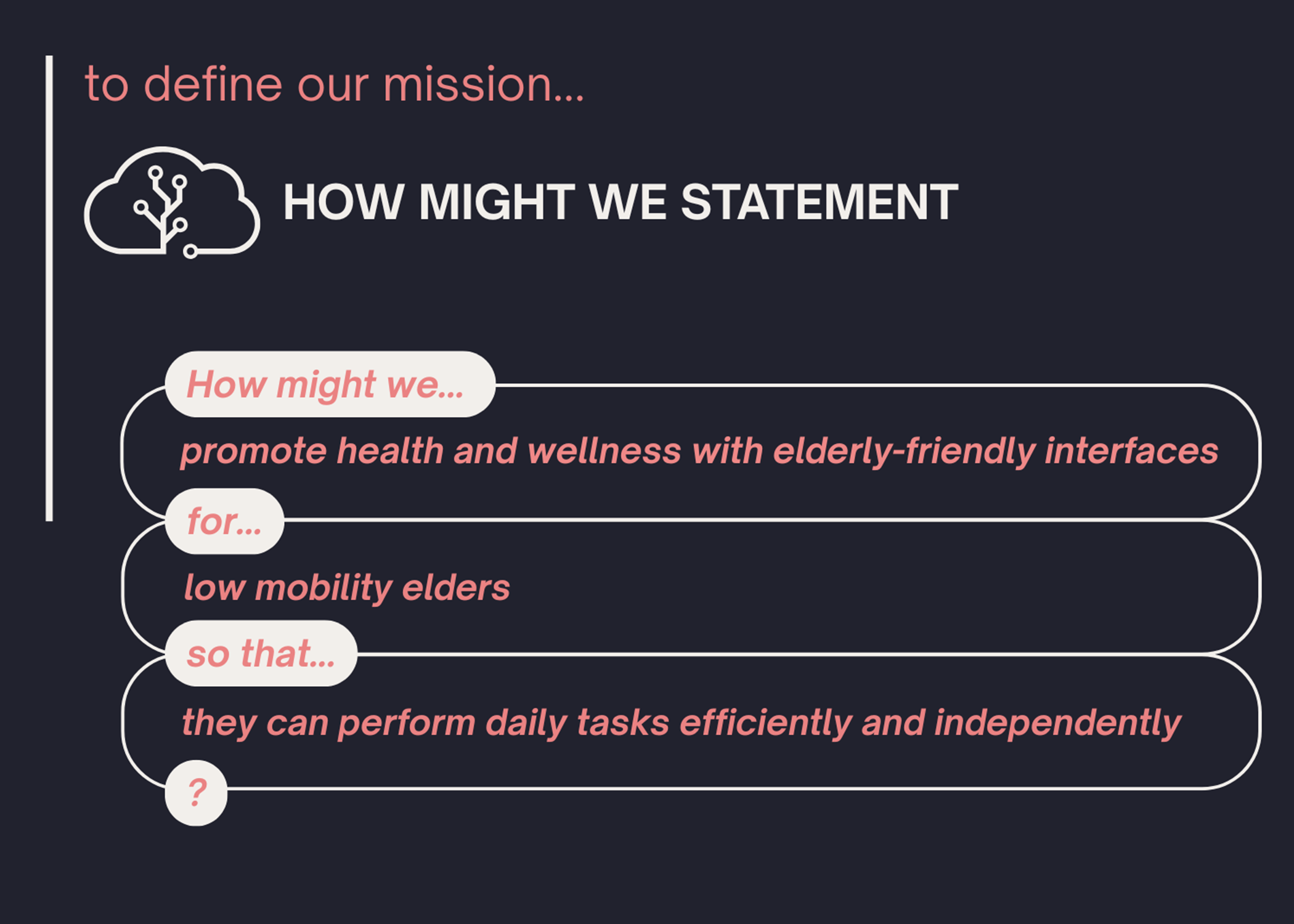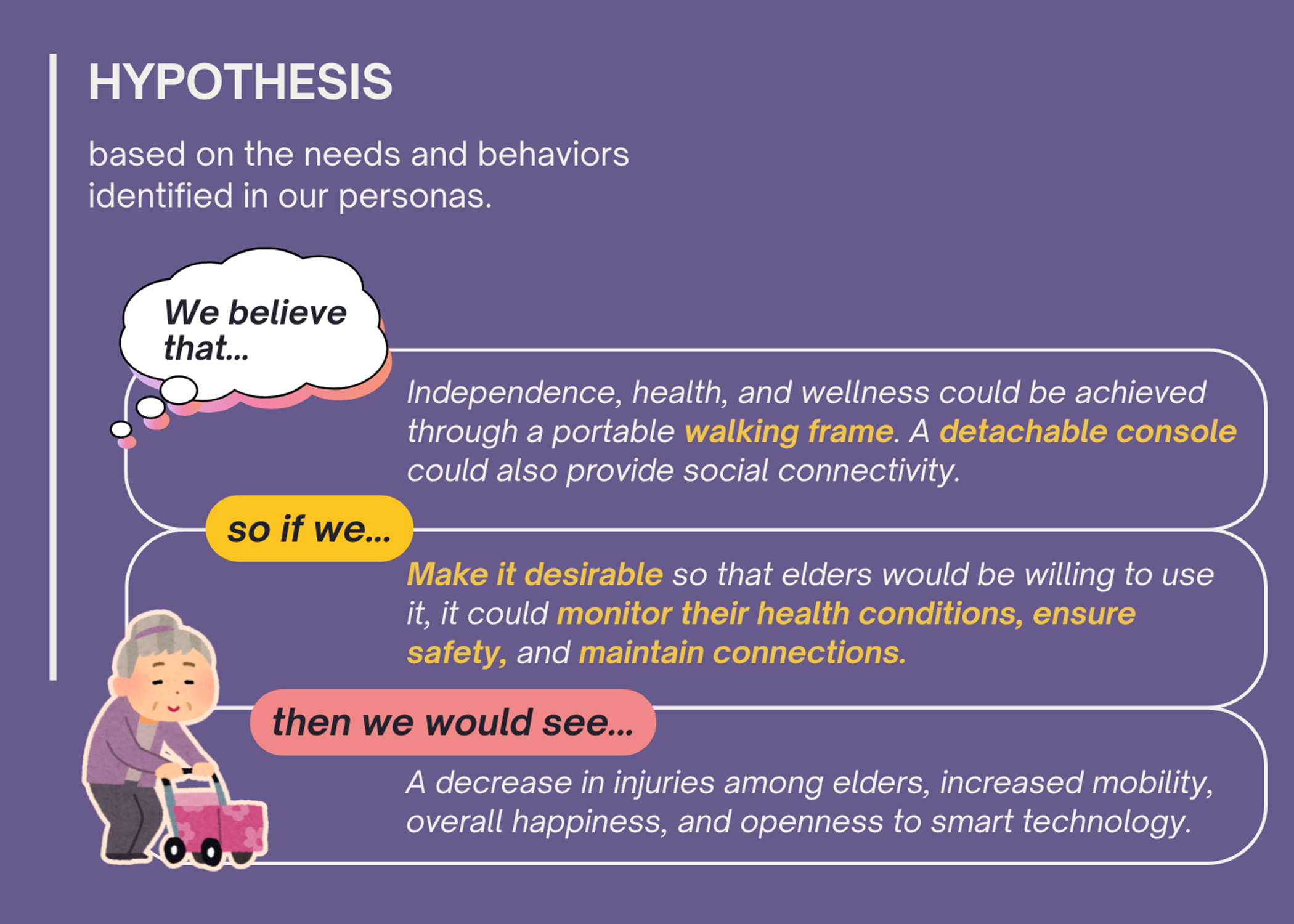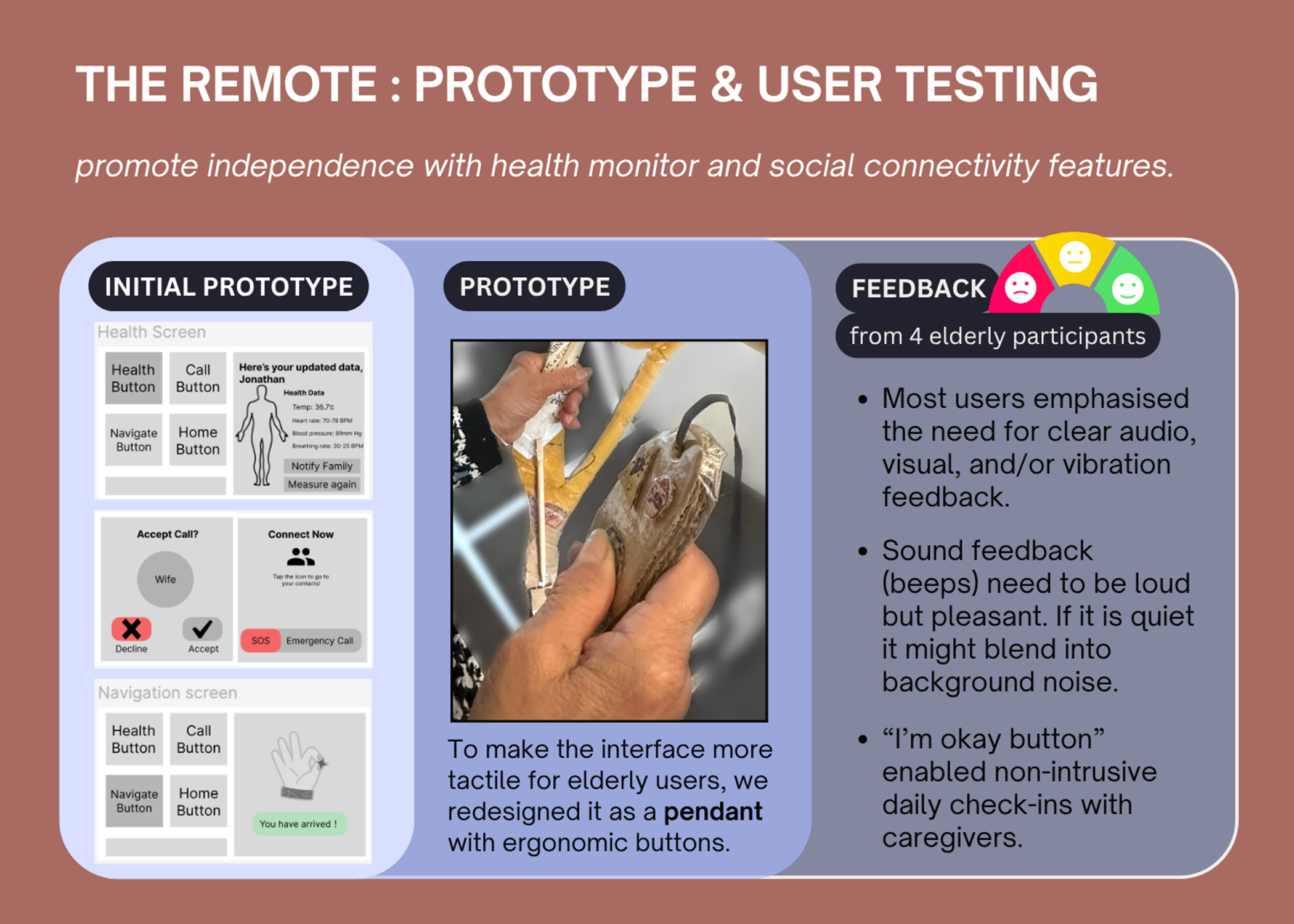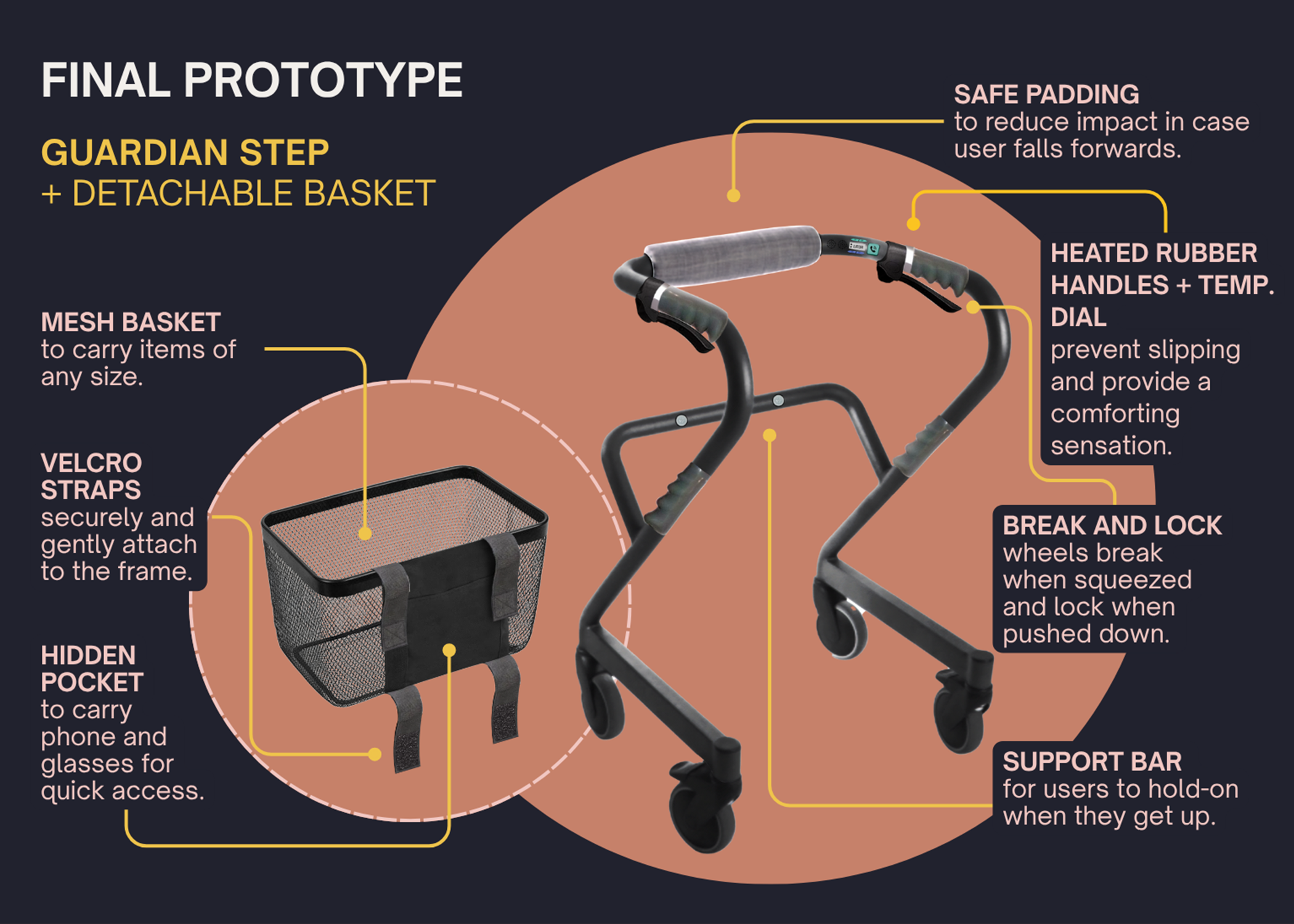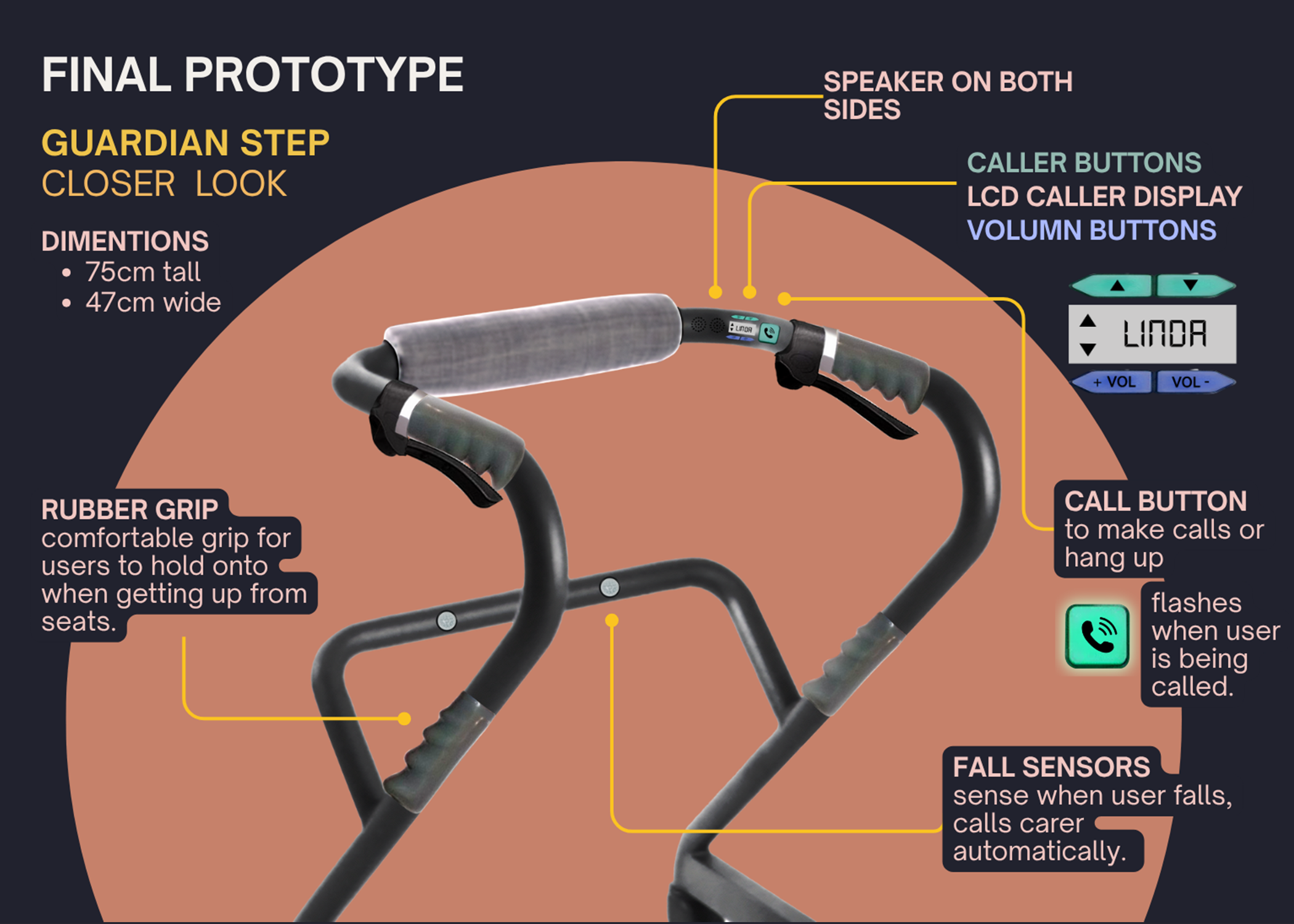GuardianWear
SMART HOME FOR ELDERS
beyond convenience to well-being and connection.
This was a team project where we worked collectively from research, to ideation, design, and presentation.
PROBLEM SPACE
Aging global population requires smart homes to evolve. Beyond convenience, they should actively support health, independence, and social connection. Research shows that by 2050, 1 in 6 people worldwide will be over 65 (Chan et al., 2008; WHO, 2021). In this project, we explore how design can foster meaningful experiences for older adults at home.
Using Nessler’s (2018) Revamped Double Diamond design process, we uncovered insights and developed solutions that can promote healthier lifestyles and stronger relationships.
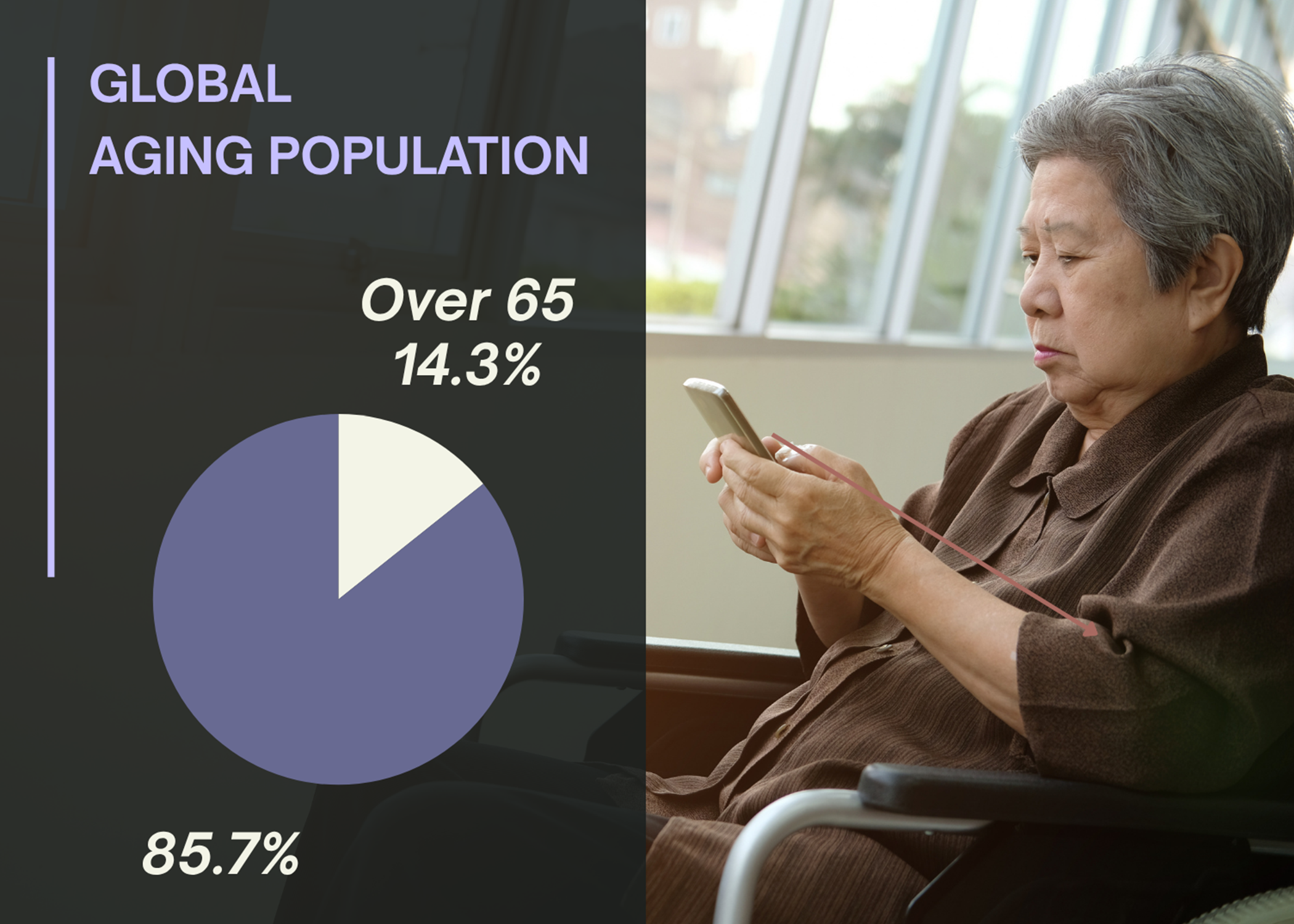
USER GROUPS
Our research identifies six key groups within the ageing population who would benefit from smart homes: older adults living with dementia, limited mobility, vision or hearing impairments, those living alone, those with chronic health conditions, and tech-savvy seniors.
USER NEEDS
The most common needs are independence, safety, and health monitoring. Therefore we designed with these user needs in mind. For this project we decided to tailor our smart home solution for elders with low-mobility.

SMART HOME TECH
FOR SAFETY AND INDEPENDENCE
Existing smart home technologies support older adults to live independently and safely through tools like health monitors, motion sensors, RFID indoor tracking, and home automation. For example, the Google Home app can automate simple daily tasks (Aggar et al., 2022), while AI and Internet of Things (IoT) systems enhance safety (Tiersen et al., 2021). Tracking devices are also used to monitor physical activity levels (Chen et al., 2023).
SMART HOME TECH
FOR SOCIAL CONNECTIVITY
For older adults who live alone or experience social isolation, user-friendly technologies can make it easier to stay connected. Features like one-touch dialing, emotionally responsive virtual assistants, interactive digital spaces, and reminders to call can support social companionship.
IDENTIFIED THEMES AND PATTERNS
Through our secondary research, we identified four key themes and user pain points that help explain the behavior of elders and why they often resist technological assistance. Such as feeling intimidated by unfamiliar interfaces, which leads to a lack of motivation to connect with others. These insights reveal opportunities to develop a more effective and empathetic design solution.
PERSONAS
To better understand our target users, we developed two personas representing older adults with low mobility.
Maggie Guo lives alone and uses a motorised wheelchair. Although she has difficulty moving around, she values her independence and prefers not to be helped.
Jonathan White lives with his wife and relies on a crutch. He takes care of both of them, but occasionally forgets daily tasks.
DEFINE OUR PROBLEM WITH
HOW MIGHT WE STATEMENT
Based on our research analysis, we redefined the problem space by framing a question that captures the core issue, our target users, and the intended outcome. This helps clarify our focus and provides a clear direction for the design team moving forward.
DEVELOPING IDEAS
HYPOTHESIS
Focusing on the needs of older adults with low mobility, we explored a range of potential solutions from smart pets to automated kitchenware. We ultimately agreed to develop a smart walking frame. We hypothesised that by redesigning the walking frame to be more appealing, incorporating health and safety features, and enabling social connectivity, it could improve overall well-being for elders with limited mobility.
INSPIRATIONS, PROTOTYPING, USER TESTING
THE FRAME
As our main target users are elders with low-mobility, we designed a smart frame that is appealing to users to boost their acceptance. We can convince them through design by making it aesthetically pleasing, comfortable to use, safe, and portable. Our goal is to design a walking frame that does not resemble a traditional medical device. Drawing from the inspirations, we transformed its original shape into something that can be redefined as a functional accessory.
PROTOTYPE & USER TESTING
THE REMOTE
Our aim for the remote is to make it as elderly-friendly as possible so that it feels intuitive and familiar to them. The initial prototype featured a screen with four square physical buttons on the left and a display on the right for visuals and data.
However, during user testing, we found that the screen resembled an iPad and didn’t attach well to the walking frame. Participants were also confused by the identical button shapes.
In response, we redesigned the remote as a wearable pendant, making essential functions more accessible. The buttons were also updated with distinct shapes to support intuitive navigation.
FINAL PROTOTYPE
THE FRAME: GUARDIAN STEP
The walker frame is rebranded as the Guardian Step to detach it from the undesirable stigma. Upon assessing our user testing feedbacks, we made the appropriate adjustments to the design.
1. Walker Size
Responding to a participant’s concern, the walker size is adjusted to be shorter and narrower so it is more convenient and in-case the user falls forwards, the safe padding on top protects them from the impact.
2. Heated Handles & Temperature Dials
For extra comfort, heated handles are improved with ergonomic grips as many testing participants showed positive reaction to this feature on our prototype. A silver temperature dial located directly next to the handles allow elders to adjust heat conveniently.
3. Break & Safety
To ensure safe options are within reach, a break is placed just below their fingers. The can squeeze on the break to slow down or lock by pushing down.
Then if the elders are seated in front of the walker, they can help themselves up with the accessible support bar.
Sensors detects when the user fall and sends a notification to their caretaker. Lastly rubber grips are installed at the lower rung to provide further support.
4. Accessibility & Flexibility
To make frequently used items easily accessible, we designed a the detachable mesh basket with a hidden pocket tailored for this walker.
5. Social Connectivity
Elders can call their loved ones just by reaching their thumb forwards to press the call button. They can input multiple contacts into the walker, select their contact person with the green buttons and control volume with the blue buttons. All buttons in our set will be made in silicone, just like the familiar remote controls back in the day. The large call button flashes when the users receive calls. This call function provides them with the much needed social connectivity without having to reach for their smart phones or landlines.


